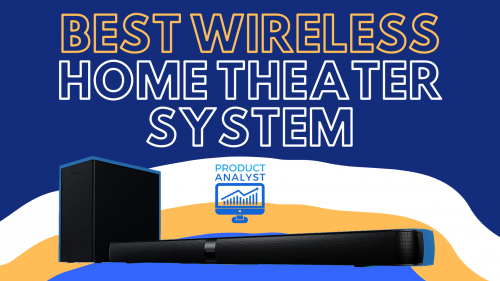
Going wireless is the most convenient and aesthetically pleasing way to set up a home theater system. However, we have all had our fair share of unstable connection frustrations.
To make sure you aren’t investing in an expensive product that will end up giving you more grief than pleasure, our team has reviewed the best wireless home theater systems.
Reviews of the Best Wireless Home Theater Systems
1. JBL Bar 5.1
The JBL Bar 5.1 takes the cake in terms of versatility and performance. What seems to be a soundbar subwoofer combo is actually a full surround sound system. You will go instantly from a single soundbar subwoofer system to enjoying expansive sound in just a few minutes.
The JBL Bar 5.1 has Dolby Digital, Dolby Pro Logic II and DTS advanced audio technologies to improve the output of your home theater system. The included external subwoofer will elevate your bass experience.
Due to the wireless nature of this system, the JBL Bar 5.1 gives users full control and flexibility for the placement and integration with your existing speaker systems.
Pros
- Versatile design
- Full surround sound
- Wireless setup
- Dolby Digital, Dolby Pro Logic II and DTS
- Supports 4K Ultra HD
- Comes with a remote
- Satellite speakers have 10 hours of battery life
- 510 watts of power
- External subwoofer
- Bluetooth connectivity
- JBL SoundShift
- Flexible placement
- Indicator lights
Cons
- Takes time to configure
- Flimsy remote
2. Polk Audio MagniFi Max SR
For high quality sound unmatched by many other wireless systems, the Polk Audio MagniFi Max SR is our top choice. Yes, the price tag is a bit higher, but considering what you will get for your money, it’s an option too good to pass up.
Even for a smaller subwoofer and rear speaker design, the MagniFi Max SR can produce dynamic and rich sound. The setup is easy and is a plug and play design that will integrate well with the main unit.
Wireless speaker systems can sometimes be unreliable in terms of audio connection, but the MagniFi Max SR has endless connection options to ensure this doesn’t happen.
Pros
- Dynamic soundstage
- Wireless subwoofer and rear speakers
- True wireless surround sound
- Polk’s SDA Audio Technology
- Voice Adjust Technology
- Sound modes
- 3 HDMI inputs
- 1 HDMI ARC
- Google Chromecast built-in
- Polk Smart Remote technology
- Bluetooth enabled
- Wall mountable
- Great for larger rooms and TVs
Cons
- Remote buttons are hard to push
- No Amazon Alexa
3. Logitech Z906 5.1 Surround Sound Speaker System
Many consumers care about the price, and rightly so. It’s a mission to weed out an amazing ultra HD soundbar that will bring the content to life in your living room, but the Z906 does it effortlessly.
It features 5.1 surround sound capabilities that match perfectly with Dolby and DTS audio formats. These speakers are THX certified, which means this wireless system contains technologies you enjoy in the theater.
The system is easy to control and the setup is simple. The peak power of your entire wireless system is an astounding 1000 watts with a continuous power output of 500.
Pros
- THX certified system
- 5.1 surround sound
- Dolby Digital and DTS format decoding
- 3D stereo sound
- Digital and analog inputs
- Advanced remote
- Powerful subwoofer for rich and deep bass
- Flexible setup
Cons
- No WiFi
- You cannot choose which speakers to turn off
Wireless Home Theater Systems Buyer’s Guide
The individual features are vital to your purchase, so our experts have put together an easy-to-follow guide that breaks down each characteristic to look for in the best wireless home theater system.
Types of Wireless Surround Sound Systems
By types of wireless surround sound systems we mean the form of connection. What does the system require to link each component together? There are two main types of wireless surround sound systems — connection through Bluetooth or Wi-Fi.
Bluetooth
Bluetooth is more commonly found in soundbars and full wireless systems.
To be completely frank, our experts say Bluetooth is more common for a reason. The quality for Bluetooth surround sound is lesser than WiFi.
While the quality is a drawback of Bluetooth, unless you are an avid audiophile or cinephile, you won’t really hear the difference between the two.
To make up for the lack of quality, Bluetooth is a more common presence, which also gives users a higher chance of compatibility with all devices. This will also eliminate some operation issues if your two devices don’t mesh.
If you do choose Bluetooth streaming, our team advises to keep your mobile device as close to your center unit as possible. Bluetooth is the type of connection that relies on distance, so the closer you are, the stronger the connection is. Do not exceed a limit of 30-33 feet.
Wi-Fi
As said, WiFi is a less ubiquitous feature in wireless surround sound systems, but they do have better quality and can be more stable. However, since they are less common, you may run into issues when pairing with your device if it isn’t compatible.
You may find a wireless surround sound system like Roku Smart Soundbar featuring both forms of wireless connection. If you do, the prices should also be much higher for these surround sound speakers. For soundbars or systems that only offer one, WiFi is the more expensive of the two.
In terms of quality, WiFi wireless technology is undeniably better and stabler. Thus, it’s the better choice for an elevated theater experience from the comfort of your own home.
Supported Audio Formats
The audio formats are the advanced audio technologies built into your device. The most commonly desired one is Dolby Atmos. Our experts thoroughly feel that Dolby Atmos is the one audio format that can deliver theater sound. It builds on existing Dolby technology but improves on them to create a multi-dimensional sound that is more accurate and realistic than others.
All Dolby technology is impressive, but there is another technology that does well for a system wireless setup, and that is DTS. DTS, like Dolby, comes with different categories and each is better than the one before it. Our experts find DTS Virtual:X to be one of the best.
You need to make sure your wireless sound systems are a good fit for your sound bar package. If your content has DTS or 4K ultra HD [1] and your chosen surround sound system does not support that, it will be a colossal waste of money because you won’t get to enjoy the benefits of your surround sound system.
Design
How is the system designed? We will delve more into the components required to have decent wireless surround sound, but for now we will focus on the appearance, size and design.
One of the most important considerations to keep in mind when looking for a surround sound system is the space. Since we are talking about a full system, your sound bar package can take up a lot of room. Pay attention to the size of each part and how you intend to set up your wireless speakers. If you have wireless surround speakers, it can take up even more space.
A system with a wireless subwoofer will be a tight fit into a small room compared to one with just a center speaker or main unit. A good trick to limit the amount of room taken up is by mounting your sound bar system. Many are lightweight and small enough to find a place on your wall.
Another feature integral to the design of your system is a control panel. One with a control panel will increase the convenience of your wireless audio system. You can control the settings from the sound bar itself and some even have a display screen to show your adjustments.
Can the system become a multi-room setup? If you have WiFi, chances are your new home theater package can be hooked up to deliver a home theater experience from all over the house.
The connection ports should be located on the back of all devices. To set up, just locate the corresponding ports and plug in the necessary cables. You don’t want the inputs to be too close together, because this will affect the accessibility and ease of plugging in the ends.
Components
What are the different parts that make up your wireless surround sound system? For a full surround sound home theater system, you will most likely see a sound bar such as the Yamaha SR-B20A, wireless speakers, and a wireless subwoofer. There can be more than just a pair of surround speakers and they are also referred to as rear speakers.
A 5.1 channel system is one that can provide true surround sound, which is why most home theater systems have that configuration. It will give you a true surround sound experience at home with high quality audio.
The 5 equals the channels of audio output there are in the system and the 1 in 5.1 refers to how many subwoofers are present.
Now let’s go into the housing of each component to take a look at the hardware. There should be three speakers in front of you, including the center channel, and two side ones. This combination is also referred to as front, left and right channels.
The side speakers or rear speakers are often battery powered or have reserve power and should be placed on either side of your listening spot. You then have the subwoofer, which is imperative to high quality bass tones.
Many of these systems are buildable, meaning you can incorporate more components either through wired or wireless connections such as Bluetooth. The most important part when considering the components included in your system is the compatibility of your setup and your content.
Sound Quality
The sound quality home speaker systems are capable of depends heavily on the technology included. We talked about the audio formats that does wonders to elevate your overall listening experience, but here are also some other features that make an audible difference.
For example, you will have brand specific audio technologies such as Sony S-Force and LG Meridian that can greatly increase the quality of your wireless speaker output.
Sound bars can also feature sound modes. There are preset controls that are embedded in the sound bar to optimize certain content.
For example, movie mode is designed to improve the quality of movie content by enhancing the explosions and sound effects you see onscreen to the hushed whispers you almost always miss. Common sound modes in a sound bar surround sound system include movie, music, news, game, night mode and standard.
The connection you choose will also affect the quality of your speakers. For example, our experts always suggest HDMI ARC if it’s present in your system. It can support the highest definition content your speakers and content can deliver. Your HDMI inputs can be found on the back of your center unit.
Price
The price of your sound bar surround sound systems will hopefully give you the best wireless surround sound quality for the money.
Technology is one of those products that will usually give you better sound quality for a higher price, but the ones we have chosen balance out the sound quality with the overall cost.
Surround speakers don’t need to cost an arm and a leg, but to ensure you have decent sound quality, you should expect to pay a few hundred dollars.
What Does Wireless Mean?
Wireless speakers can do what the name suggests —- be connected without the presence of wires. Your speakers will use radio waves or sound waves to transmit signals. The two main wireless connectivity methods offered by speakers and soundbars are Bluetooth and WiFi.
A wireless home theater system can pair directly with your TV with Bluetooth or WiFi if you have the right technology. Otherwise, the only part of your system that is wireless will be the components with the center unit.
Wireless Home Theater System Advantages
There are plenty of advantages to wireless home theater surround sound systems. The two major ones include a very neat and hassle-free setup without any cables and the other being the flexibility it can afford you.
Other than the wireless connection that can combine all the components together, a wireless connection can also allow you to stream content to your wireless surround sound system from mobile devices such as your phone, tablet or computer.
Wireless surround sound systems just like Bose Soundtouch 120 will still require a power source and this will be a cabled connection. A wireless surround sounds system refers more to the connection of all the components together and from your system to your listening spot without the need for cables and wires.
Without wires, it’s also a much safer alternative than to have hazardous cables running along the ground that can easily be tripped over. While you can find a way to hide the cables in your wireless surround sound system, it still won’t beat the convenience of true wireless speaker system.
FAQ
What is the best wireless surround sound system?
The best wireless surround sound system is the JBL Bar 5.1 This sound bar audio system looks like a sound bar subwoofer combo only, but in reality it has rear speakers — they are just attached to the sound bar. This incredibly versatile system allows you to go from a 3.1 to a 5.1 true surrounding system in a matter of seconds.
Is there a truly wireless home theater system?
No, there isn’t a truly wireless home theater system. This is because your devices and its components will always require a power source, which is a cable connection. However, in terms of a wireless connection for all components, the JBL Bar 5.1 is as close to truly wireless as possible.
Are wireless home theater systems good?
Yes, wireless home theater systems are good. In fact, these systems including individual speakers are often preferred. They offer placement flexibility and a neat and clean setup. Without cables and wires, they are also a safer option and aren’t tripping hazards.
Our Top Pick For a Wireless Home System: JBL Bar 5.1
Our experts find the JBL Bar 5.1 to be the best wireless home theater system on the market today. Not only does it feature an incredibly unique design with detachable speakers to allow you to customize your experience, it is also very versatile.
The transformation is done easily and each side speaker has 10 hours of stored power, enough to get through all your desired content. Complete with Dolby technology such as Dolby Pro Logic II and DTS, the JBL Bar 5.1 can deliver accurate sound on an expansive sound stage.
Aside from the design, the Bar is also a good size to fit into most living rooms and is lightweight enough to be wall-mounted. Although the subwoofer cannot be mounted, the 10-inch profile makes it easy to find a spot for thrilling bass.
The Bar has JBL proprietary SoundShift Technology to switch from TV sound to your mobile device with the press of a button. The Bluetooth makes streaming easy and the remote gives you full control over the system.
If you are looking for a soundbar on a budget, yet still capable of providing a theater surround sound experience, check out our review of Klipsch Cinema 600 here.
The post What is the Best Wireless Home Theater System? Enjoy Surround Sound Clutter-Free (2020) appeared first on The Product Analyst.
from The Product Analyst https://theproductanalyst.com/best-wireless-home-theater-system/

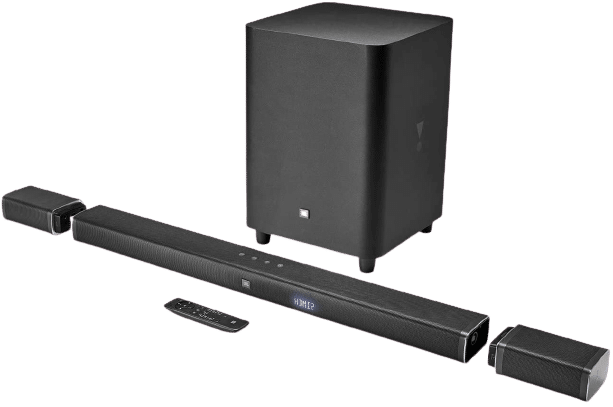
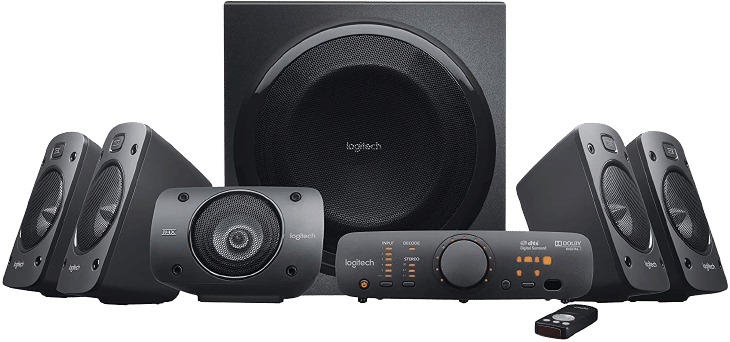
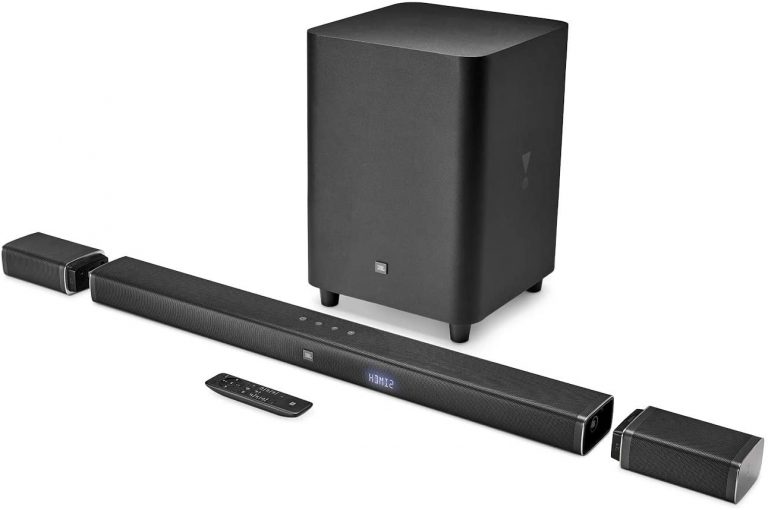
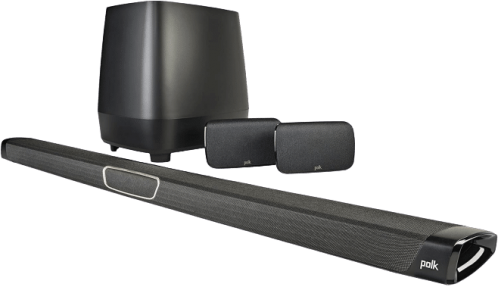

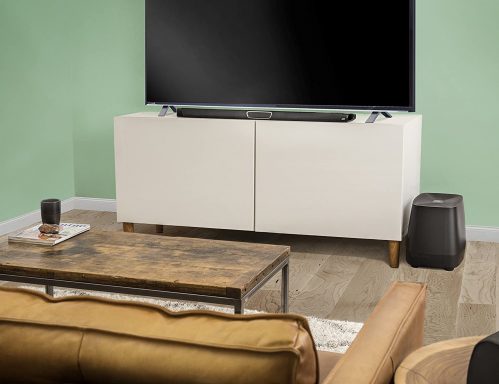

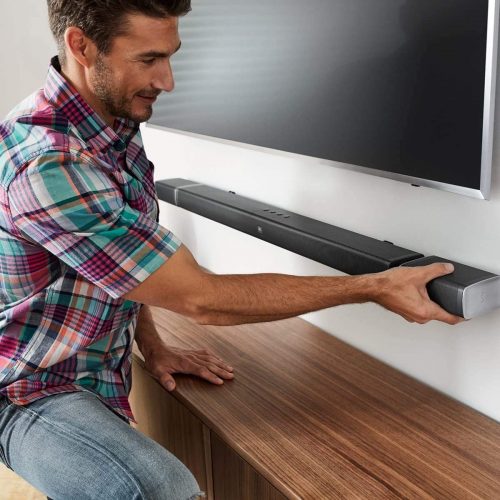

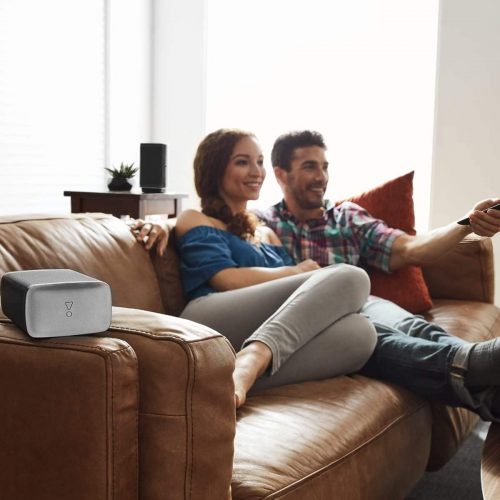
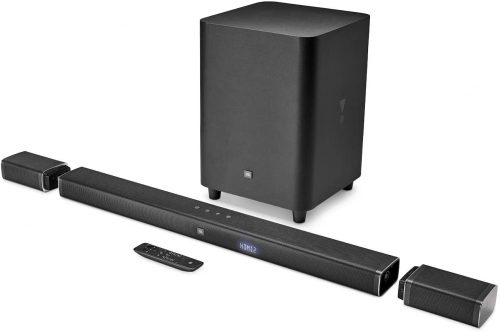
No comments:
Post a Comment